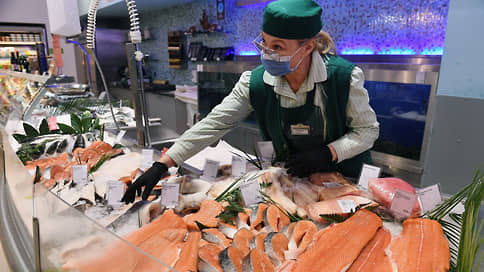Trout goes to growth – Newspaper Kommersant No. 50 (7495) dated 03/24/2023
[ad_1]

Inarctic, a major salmon and trout producer, is expanding its capacity amid reduced supply on the Russian redfish market. The company acquired a fish hatchery in the Nizhny Novgorod region, which will increase the production of fry. A free niche in the market will remain for several more years, and due to greater availability, trout is crowding salmon on the shelves.
The manager of the complex for breeding sturgeon in the Nizhny Novgorod region LLC Mulinskoye fish farming came under the control of the Russian producer of Atlantic salmon and trout Inarktika. Changes to the Unified State Register of Legal Entities were made on March 17. According to its own data, the complex with a total area of more than 5.7 thousand square meters. m includes a fry breeding workshop, recirculating water supply units (RAS) for keeping fish and processing capacity. In “Inarctic” and the former owner of the Mulinsky fish farm German Magin did not comment on the deal.
Inarctica has the rights to 35 salmon and trout breeding sites in the Barents Sea and lakes of Karelia with a potential production of 50,000 tons of fish per year. In 2021, the company’s sales increased by 80%, to 27.9 thousand tons, there are no more recent data. According to the results of January-September 2022, the revenue of PJSC Inarctica tripled year-on-year, to 3.76 billion rubles, net profit was 3.5 billion rubles. In December 2022, Maxim Vorobyov, who owned about 47% of Inarctic, and his brother, Governor of the Moscow Region Andrei Vorobyov, came under US sanctions. After that, the company announced a decrease in the share of Maxim Vorobyov to less than 24%.
A Kommersant source on the market says that the Nizhny Novgorod complex was valued at about 150 million rubles. The plant requires modernization, after which it is possible to increase production volume, which will allow Inarctic to increase the capacity for breeding fry in Russia, says the interlocutor of Kommersant. In 2022, Inarctica acquired two fish farms in the Kaluga Region. According to the authorities of the region, it is planned to grow fry at the enterprises, which will then be delivered to the Murmansk region.
The executive director of the Association of Industrial and Commercial Enterprises of the Fish Market, Alexander Fomin, says that trout fry are grown only in fresh water, and when they reach a mass of 10–20 g, they are transplanted into the sea. As the expert notes, it is possible that the construction of a RAS in the Murmansk region is more expensive than the purchase of a remote complex and transportation costs. Ilya Bereznyuk, managing partner of Agro & Food Communications, says that Inarctica is probably trying to provide itself with the capacity to produce fry and load the available fish breeding sites. Due to the reduction in imports of red fish in 2022, the niche for expanding production in the market may remain for another five years, he notes. And “Inarctica”, according to the expert, is one of the few suppliers of chilled red fish in the Russian Federation, which is valued better than ice cream.
According to the estimates of the National Rating Agency (NRA), Chile and the Faroe Islands provided about 60% of imports of salmon and red fish fillets in Russia. After the tightening of Western sanctions against the Russian Federation in connection with military operations in Ukraine, these supplies came under pressure. In 2021, imports and domestic production of red fish were estimated at 152 thousand tons. Due to a decrease in supply, the average cost of salmon in 2022 increased by 25% year-on-year, exceeding 1 thousand rubles. per 1 kg, calculated in the NRA.
As Ilya Bereznyuk notes, the rise in prices has a negative impact on the consumption of red fish, but trout is still relatively affordable and, perhaps, Inarctica will increase the production of trout in the first place. The Association of Retail Companies noted that in the fourth quarter of 2022, salmon sales decreased by more than 30%, but demand for trout, which is 30-40% cheaper, increased by a similar amount.
[ad_2]
Source link





